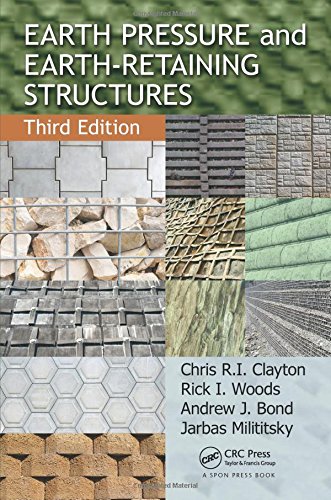

Most ebook files are in PDF format, so you can easily read them using various software such as Foxit Reader or directly on the Google Chrome browser.
Some ebook files are released by publishers in other formats such as .awz, .mobi, .epub, .fb2, etc. You may need to install specific software to read these formats on mobile/PC, such as Calibre.
Please read the tutorial at this link. https://ebooknice.com/page/post?id=faq
We offer FREE conversion to the popular formats you request; however, this may take some time. Therefore, right after payment, please email us, and we will try to provide the service as quickly as possible.
For some exceptional file formats or broken links (if any), please refrain from opening any disputes. Instead, email us first, and we will try to assist within a maximum of 6 hours.
EbookNice Team

Status:
Available4.7
20 reviewsEffectively Calculate the Pressures of Soil
When it comes to designing and constructing retaining structures that are safe and durable, understanding the interaction between soil and structure is at the foundation of it all. Laying down the groundwork for the non-specialists looking to gain an understanding of the background and issues surrounding geotechnical engineering, Earth Pressure and Earth-Retaining Structures, Third Edition introduces the mechanisms of earth pressure, and explains the design requirements for retaining structures. This text makes clear the uncertainty of parameter and partial factor issues that underpin recent codes. It then goes on to explain the principles of the geotechnical design of gravity walls, embedded walls, and composite structures.
What’s New in the Third Edition:
The first half of the book brings together and describes possible interactions between the ground and a retaining wall. It also includes materials that factor in available software packages dealing with seepage and slope instability, therefore providing a greater understanding of design issues and allowing readers to readily check computer output. The second part of the book begins by describing the background of Eurocode 7, and ends with detailed information about gravity walls, embedded walls, and composite walls. It also includes recent material on propped and braced excavations as well as work on soil nailing, anchored walls, and cofferdams. Previous chapters on the development of earth pressure theory and on graphical techniques have been moved to an appendix.
Earth Pressure and Earth-Retaining Structures, Third Edition is written for practicing geotechnical, civil, and structural engineers and forms a reference for engineering geologists, geotechnical researchers, and undergraduate civil engineering students.